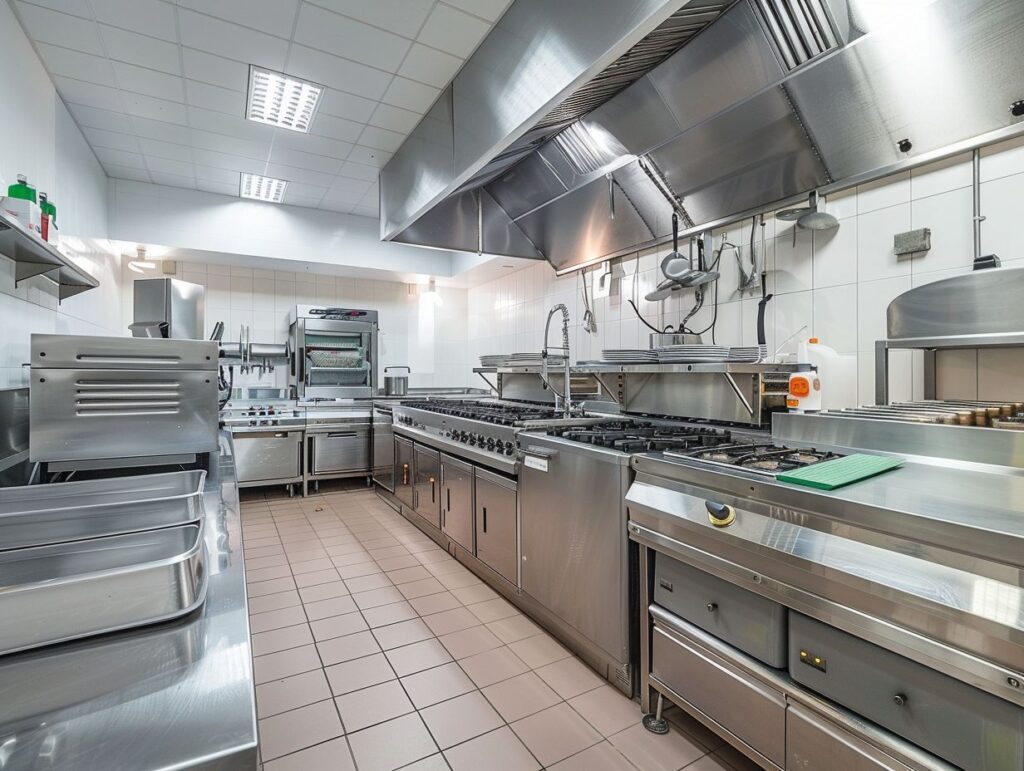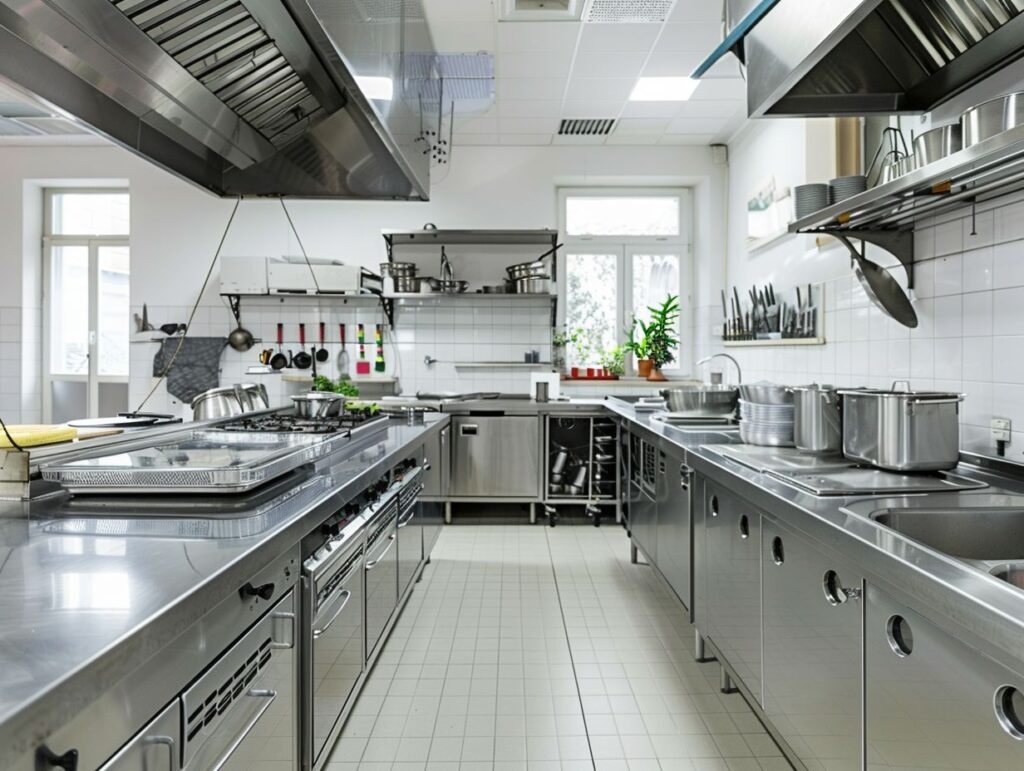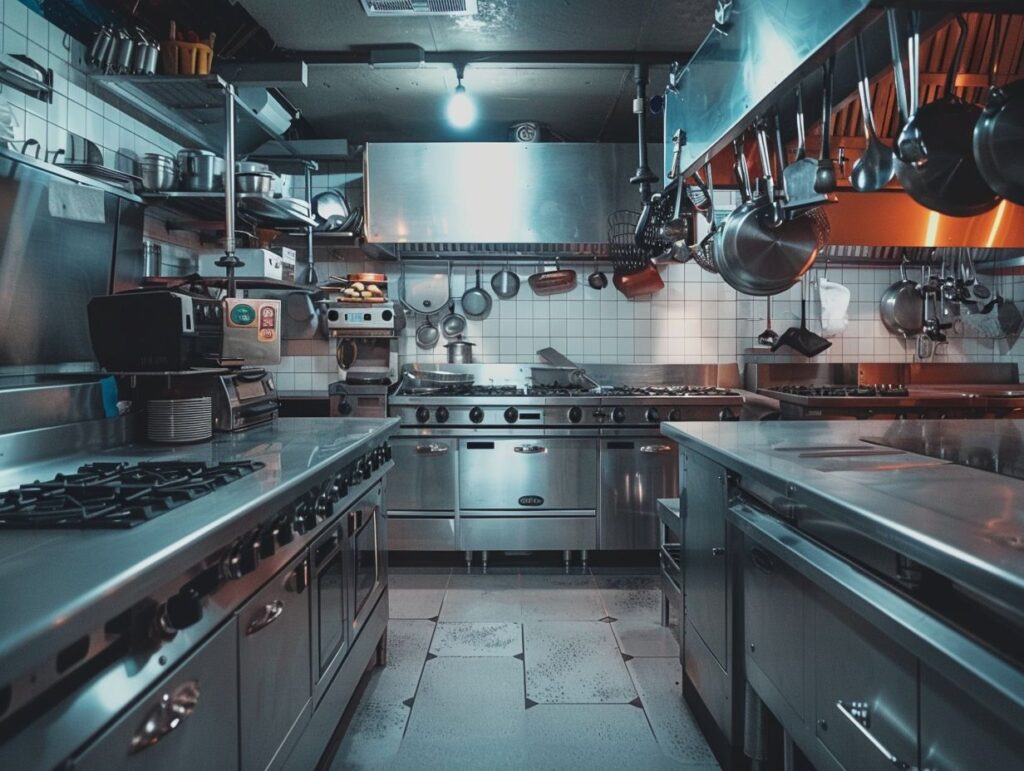How To Sustain The Highest Levels Of Hygiene In Your Restaurant Kitchen
Maintaining high levels of hygiene in your restaurant kitchen is crucial for your customers’ well-being and your business’s success. From using proper handwashing techniques to sanitising surfaces and equipment, there are key practices you must follow to create a clean and safe environment.
In this article, we will explore the importance of hygiene in your restaurant kitchen, share best practices for cleanliness, discuss strategies to prevent cross-contamination, highlight the significance of employee training, and emphasise the necessity of regular inspections to ensure compliance with hygiene standards.

Importance of Hygiene in Restaurant Kitchens
If you run a restaurant kitchen, you know that keeping things clean is key. High standards of hygiene and food safety aren’t just important—they’re essential for keeping your customers safe, following health regulations, and building a solid reputation for your business.
Good hygiene practices cover a lot of ground in a restaurant kitchen. They include washing hands and wiping down surfaces, storing food properly, and managing waste. They are all about preventing foodborne illnesses and serving top-notch quality food to your patrons.
The Impact on Customers and Business
Maintaining high hygiene standards in your restaurant kitchen is crucial for complying with health codes and ensuring your customers stay healthy. It also helps you avoid foodborne illnesses that could hamper your food service operations.
When you follow these health codes and keep a tight ship on quality control, you’re not just looking out for your customers’ well-being. You’re also keeping them happy and boosting your business’s reputation.
So, prioritise cleanliness, handle food properly, and adhere to sanitation practices. This will build trust with your diners and show them you’re all about keeping them safe and healthy.
Remember, those regular health department inspections are like little reality checks. They make sure your place is up to snuff, and their strict enforcement of hygiene rules reminds everyone how important it is to follow the rules and prevent any foodborne illnesses from breaking out.

Creating a Hygienic Environment
To create a clean environment in your restaurant kitchen, follow thorough sanitation guidelines and strict compliance measures to ensure all your food prep areas meet health and safety standards. This means you should be on top of everything – from using the correct handwashing techniques and disinfecting surfaces to maintaining your cleaning schedule and storing ingredients properly.
Best Practices for Maintaining Cleanliness
To maintain cleanliness in your restaurant kitchen, you must establish good hygiene habits, implement preventive measures, and design an efficient kitchen layout that makes cleaning and organisation easy.
You’ve got to set up a regular cleaning schedule to keep things squeaky clean. Assign specific tasks to your staff daily, weekly, and monthly to meet all cleaning needs. Encourage a culture of cleanliness among your kitchen crew to create a team effort to keep the kitchen spotless.
Preventive measures like regular pest control and proper food storage can cut down on the risk of contamination. Organising your kitchen layout with designated areas for different tasks will make cleaning easier and boost overall efficiency.
Proper Handwashing Techniques
You know you’ve got to nail those handwashing techniques to keep things squeaky clean and prevent pesky contamination in your restaurant kitchen. Ensure all your team members are on top of it, eliminating potential baddies and strengthening that hygiene game.
Step-by-Step Guide to Effective Handwashing
To nail an effective handwashing routine, you’ve got to follow a few key steps that not only meet health regulations but also guarantee your hands are squeaky clean. This is crucial for keeping up with hygiene certifications and safe food handling practices.
So, here’s how you should do it:
- Start by getting your hands wet with clean, running water – it doesn’t matter if it’s cold or hot.
- Then, slap on enough soap to coat all parts of your hands.
- Rub those hands together like you mean it, making sure to get every nook and cranny – the backs, between your fingers, and under those nails.
- Scrub away for 20 seconds, and sing ‘Happy Birthday’ twice to keep track of time.
- Rinse those sudsy hands under running water until all the soap is gone.
- Finally, pat those hands dry with a clean towel or blast them with an air dryer.

Sanitising Surfaces and Equipment
Sanitising surfaces and equipment regularly is essential to keeping your restaurant kitchen safe from contamination. This means using proper cleaning techniques and the right commercial kitchen equipment.
Recommended Cleaning Products and Methods
Keeping your kitchen surfaces and equipment clean is key. Choose the right cleaning supplies and use effective cleaning techniques.
To ensure your kitchen is adequately sanitised, use EPsanitisedd disinfectants like bleach or hydrogen peroxide-based cleaners. These tough cookies can kill a wide range of germs, bacteria, and viruses, keeping your kitchen spotlessly clean.
Remember to pay extra attention to high-touch areas like worktops, tap fixtures, and fridge handles. Grab some microfibre cloths or disposable wipes to avoid spreading germs and ensure a thorough clean. Oh, and make sure you wash those tea towels and sponges regularly to keep things hygienic.
Follow these top-notch practices, and you’ll arm your kitchen against nasty germs while also boosting food safety. Good job!
Preventing Cross-Contamination
If you want to keep your restaurant kitchen safe from foodborne illnesses, you’ve got to be on top of preventing cross-contamination. That means you must handle food carefully, ensure your staff is dressed correctly, and adhere to strict hygiene rules.
Strategies for Avoiding Foodborne Illnesses
To avoid foodborne illnesses in your restaurant kitchen, you need to have solid strategies in place. You must ensure strict temperature control, effective storage procedures, pest control, and proper waste handling.
Temperature control is key to stopping bacteria from partying in your food. Store raw meat away from ready-to-eat goodies, and avoid cross-contamination. These simple steps slash the risk of nasty foodborne diseases.
Don’t forget about pest control, either. Regular inspections and smart waste management are your best bet for keeping pests at bay. Get rid of waste promptly and in the correct bins to stop harmful pathogens from setting up camp. These tactics are the foundation of a safe and squeaky-clean kitchen space.

Employee Training and Education
Employee training and education are key to maintaining top-notch cleanliness in your restaurant kitchen. You need to ensure your staff undergo regular training sessions, in-depth hygiene education, and ongoing food safety training to keep everyone up-to-date and following best practices.
Importance of Proper Training and Ongoing Education
It is crucial to ensure that all staff members understand their responsibilities, comply with health regulations, and contribute to a strong food safety culture in your restaurant. Without proper training, your employees may lack the necessary knowledge and skills to handle food safely, potentially leading to contamination or foodborne illnesses.
Ongoing education is critical to reinforcing the importance of hygiene practices and informing your staff about the latest regulations and industry best practices. By prioritising continuous learning and prioritising all your staff members’ hygiene certifications, you can maintain high standards of cleanliness and safety in your restaurant. This not only protects your customers but also safeguards the reputation of your establishment.
Regular Inspections and Audits
You must ensure you’re on top of those regular inspections and audits to keep your restaurant kitchen up to scratch with hygiene standards. Those inspections and food safety audits are crucial for maintaining top-notch cleanliness and operational efficiency.
Ensuring Compliance with Hygiene Standards
To ensure compliance with hygiene standards in your restaurant kitchen, you need to set up a solid monitoring system, use an inspection checklist, follow regulatory standards, and keep meticulous records. These methods are crucial for keeping your customers and employees safe and healthy.
A monitoring system lets you monitor cleanliness levels in real-time, catching potential risks or areas that need improvement. Regular inspections using a detailed checklist ensure that all sanitation rules are diligently followed.
Following regulatory standards promotes your restaurant and helps you avoid fines and legal troubles. Keeping thorough records creates a useful paper trail that can help you spot trends, track progress, and demonstrate your responsibility for maintaining a clean and hygienic environment.
